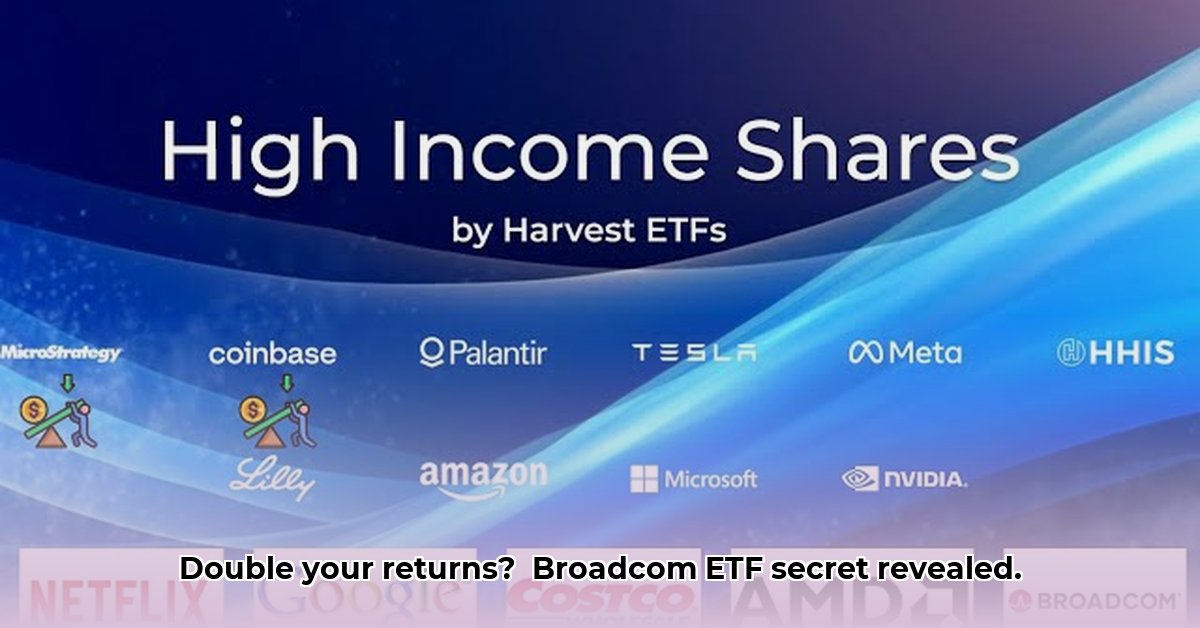
Investing in technology giants like Broadcom (AVGO) can be lucrative, but leveraged ETFs offer the potential to amplify returns – and losses. For broader market insights, consider checking out this helpful resource on future investment trends. This article compares three Broadcom leveraged ETFs: Direxion's Daily AVGO Bull 2X Shares (AVL), Defiance's Daily Target 2X Long AVGO ETF (AVGX), and Direxion's Daily AVGO Bear 1X Shares (AVS), analyzing their risks and potential benefits for short-term strategies.
Understanding Leveraged ETFs and Their inherent Risks
Leveraged ETFs aim to multiply the daily return of an underlying asset. A 2x leveraged ETF like AVL or AVGX seeks to double the daily performance of AVGO; a -1x ETF like AVS aims to profit from a decline in AVGO's price. While this offers the potential for significant gains, it also magnifies losses. A 1% increase in AVGO's price should ideally translate to a 2% gain in a 2x ETF, but a 1% drop becomes a 2% loss. This leverage effect compounds daily, meaning small daily fluctuations can accumulate to substantial differences over time.
This inherent volatility makes leveraged ETFs unsuitable for long-term investors. The daily compounding of gains and losses can lead to actual returns diverging significantly from the intended multiple over extended periods. For example, while a 1% daily gain might seem small, over several days or weeks, it can yield returns that exceed or fall considerably short of the theoretical 2x multiple. This deviation is a key risk to understand.
Are leveraged ETFs suitable for every investor? The answer is a resounding no. This high-risk, high-reward strategy demands significant market understanding and a high tolerance for volatility. How can you minimize the potential for significant losses? By using a short-term investment approach.
Comparing AVL, AVGX, and AVS: A Comparative Analysis
Several ETFs provide leveraged exposure to Broadcom. AVL and AVGX both aim for 2x daily leverage, betting on AVGO's price appreciation. AVS, conversely, is designed to profit from a decline in AVGO's price. This diversity highlights the importance of understanding both the potential for substantial gains and also the potential for devastating losses. The following table summarizes the key risk factors:
| Risk Factor | AVL | AVGX | AVS |
|---|---|---|---|
| Leverage Risk | Extremely High | Extremely High | Extremely High |
| Volatility Risk | Very High | Very High | Very High |
| Tracking Error Risk | Moderate to High | Moderate to High | Moderate to High |
| Liquidity Risk | Moderate | Moderate | Moderate |
| Counterparty Risk | Low | Low | Low |
Leverage Risk: The core risk is the 2x (or -1x) leverage. Market fluctuations are amplified, leading to potentially large gains or significant losses.
Volatility Risk: These ETFs are inherently volatile, resulting in more significant price swings than AVGO itself. This heightened volatility increases the possibility of substantial, even rapid, losses.
Tracking Error Risk: The ETFs might not perfectly match their target leverage due to daily rebalancing and market conditions. This tracking error can accumulate over time.
Liquidity Risk: While generally moderate, liquidity can become a concern during market downturns, making it difficult to sell at the desired price.
Counterparty Risk: This refers to the risk of the ETF provider failing to meet obligations. This risk is typically low for established providers.
Mitigating Risk in Leveraged Broadcom ETFs
Successfully navigating the world of leveraged Broadcom ETFs requires a strategic approach and a realistic understanding of the significant risks involved. While the potential for high returns is alluring, the amplified risk of considerable losses demands careful consideration. "These ETFs are not set-it-and-forget-it investments," notes Dr. Anya Sharma, Professor of Finance at the University of California, Berkeley. "Active management and a deep understanding of your risk tolerance are crucial."
How can you mitigate the risks?
Short-Term Strategy: These ETFs are most suitable for short-term trading strategies; long-term holding magnifies the impact of tracking error and volatility.
Risk Assessment: Thoroughly assess your risk tolerance before investing. Only invest capital you can afford to lose entirely.
Diversification: Integrate leveraged ETFs into a broader, diversified portfolio to reduce overall portfolio risk.
Stop-Loss Orders: Employ stop-loss orders to limit potential losses to a pre-determined level.
Market Awareness: Stay informed about market conditions and adjust your positions accordingly, especially during periods of high volatility.
Conclusion: Informed Decisions are Key
Broadcom leveraged ETFs present a high-risk, high-reward opportunity primarily suited for short-term traders. Their ability to amplify daily returns is offset by equally amplified losses. The potential for significant profits must be balanced against the potential for equally significant losses. Thorough research, a strong understanding of market dynamics, and a realistic risk assessment are essential before investing in these complex financial instruments. Consult a financial advisor to tailor a strategy aligned with your financial goals and risk tolerance. Before investing in any leveraged ETF, remember that informed decisions protect your financial future.